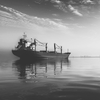Mandatory carriage of automatic identification systems (AIS) throughout the country, as it is currently envisioned by the Coast Guard, will not result in increased safety or security, AWO told the agency in comments filed on December 31, 2003.
The Coast Guard was soliciting comments on whether and how to expand AIS carriage requirements beyond the nine Vessel Traffic Service (VTS) zones to other waterways. While AWO has been a long-time proponent of the AIS concept as a navigational safety tool, AWO has questions about the technical aspects of AIS and its implementation, as well as the potential negative impact on safety when AIS is required for some types of vessels while not for others. AWO has asked the Coast Guard to reconsider its proposal to expand AIS carriage requirements beyond the existing VTS zones to better address the nation’s safety and security needs.
AWO’s comments addressed the specific questions the Coast Guard posed in its request for comments published in the September 26, 2003 Federal Register. Given the limitations on federal resources for use in the war on terrorism, AWO posited whether such a system could produce enough meaningful information to justify the burdens that it would place on the Coast Guard and whether the funding and resources necessary to operate this system would be better spent on other, more effective approaches to security.
“AWO does not support at this time extension of AIS for security purposes along coastal areas of the United States, on inland rivers north of Baton Rouge or along the Gulf Intracoastal Waterway west of VTS Houston/Galveston or east of VTS Lower Mississippi River. AIS should not be used as a security tool outside VTS zones, where the Coast Guard does not have either the infrastructure in place or adequate manpower to monitor vessels,” AWO wrote.
Additionally, AWO believes that the Coast Guard should allow vessels to enter the upper end of the VTS Lower Mississippi River zone without requiring AIS carriage so long as those vessels do not pass south of Mile 235. Considering the limited amount of time that these vessels spend in the VTS zone, AIS carriage is not a cost effective security measure for them. However, AWO noted that in some areas where most operators would already be equipped with AIS, like Buzzards Bay and the area between Houston and New Orleans, AIS carriage requirements could be established to address specific local concerns.
In addition, AWO questioned the value added usefulness of AIS as a security tool over large geographic areas. Currently, AIS is planned for VTS zones, where the Coast Guard has a communications infrastructure in place and personnel to monitor the waterways. However, these zones cover less than 1,000 miles of the 25,000 miles of U.S. coastal and river areas. For AIS to be an effective tool nationwide, the Coast Guard would need to build a massive infrastructure to monitor the system; commit a large staff to monitor this system; and adopt a complex information technology system to adequately assess the risk that vessels utilizing the system might face.
AWO believes that the Coast Guard should not require AIS for vessels on domestic voyages outside the current VTS zones until at least July 1, 2008. A national carriage requirement should not be established until AIS meets the fundamental criteria of offering a positive cost-benefit and a measurable safety benefit. A baseline requirement for those criteria would be for AIS to be required on all of the self-propelled vessels which may meet on a given waterway. AWO also noted that AIS should not be required on non self-propelled vessels such as barges. Since AIS is cost-prohibitive for many vessel operators, a less expensive alternative to the UAIS-A standard is needed before the Coast Guard imposes an all-inclusive carriage requirement for self-propelled vessels.
Sponsored Content
Chris-Marine’s solutions help to prolong engine lifetime

Subscribe for
Maritime Reporter E-News
Maritime Reporter E-News is the maritime industry's largest circulation and most authoritative ENews Service, delivered to your Email five times per week









